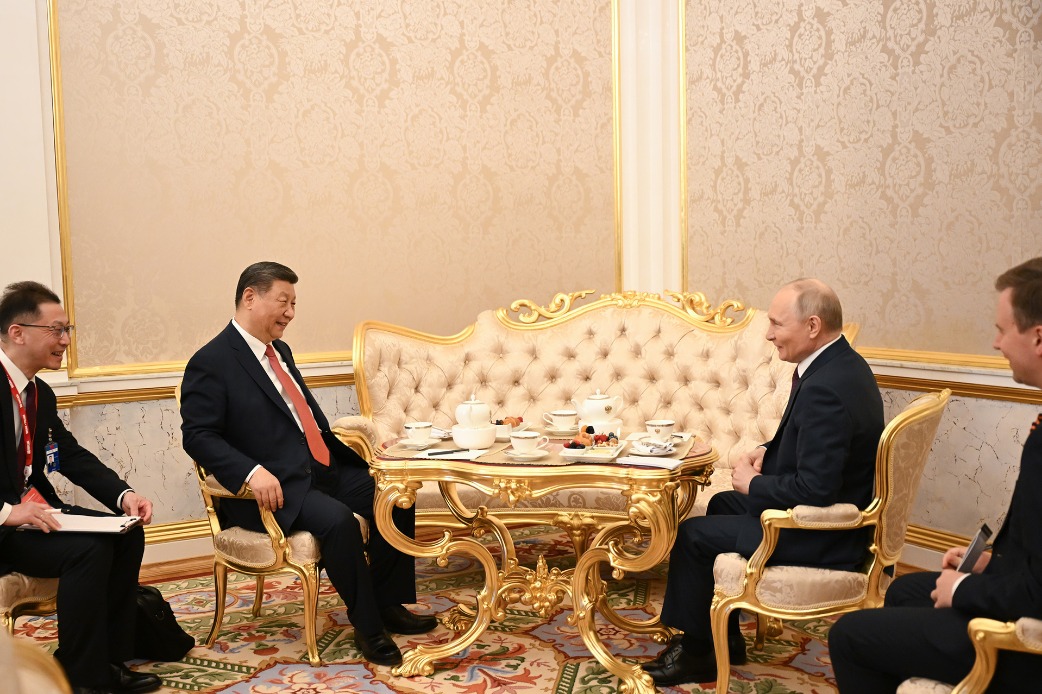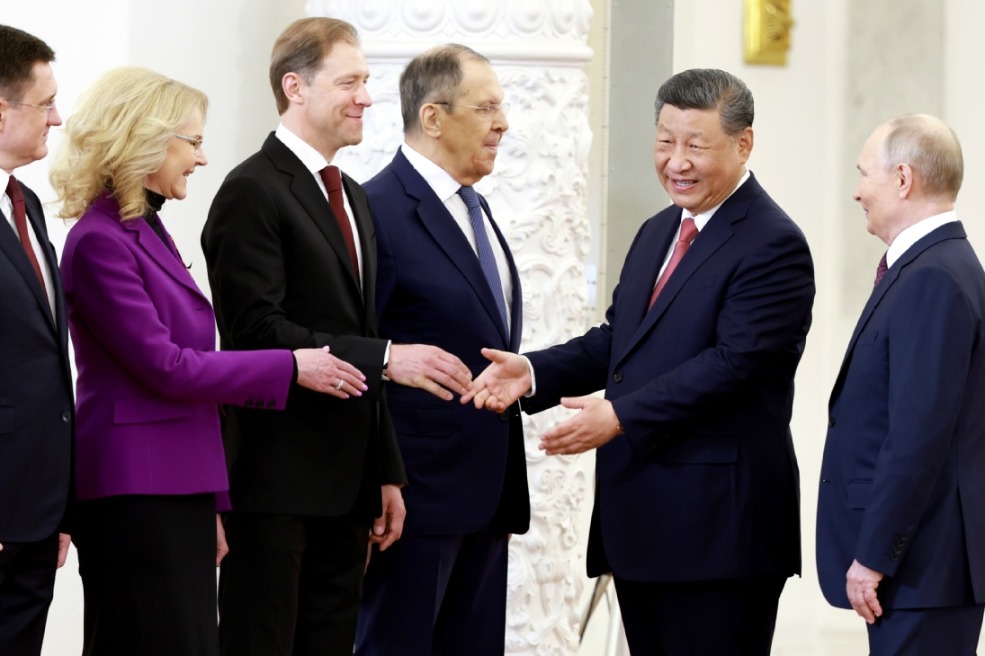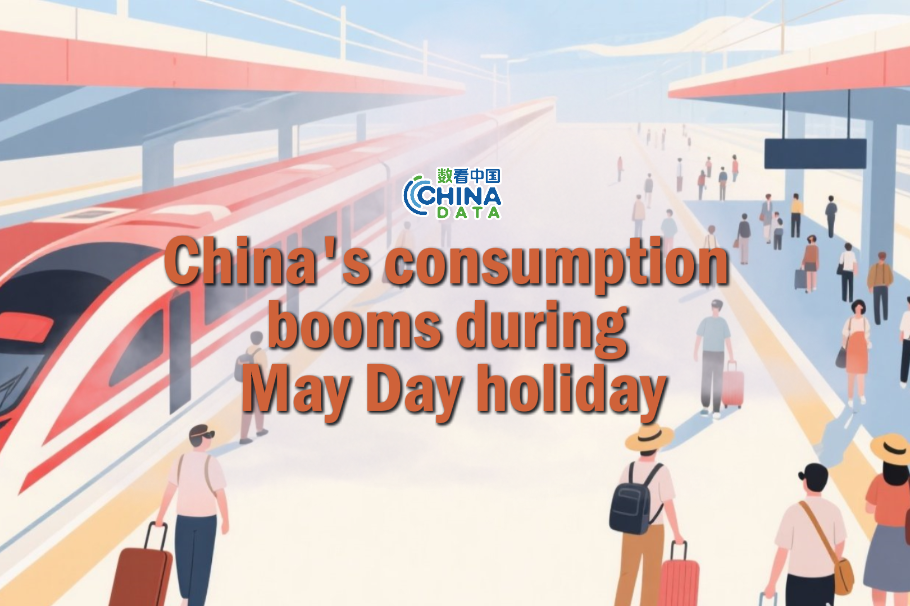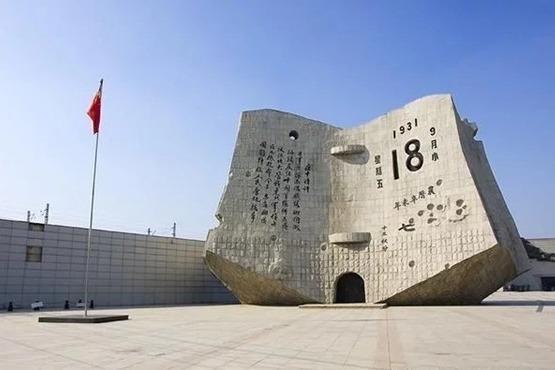Practical applier

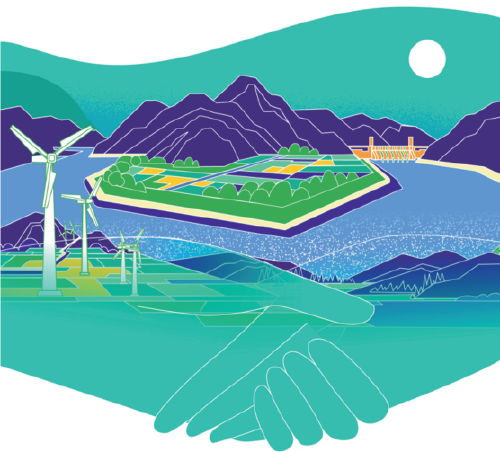
LMC can serve as the demonstration pilot for implementation of the GDI
The Lancang-Mekong Cooperation mechanism, launched in March 2016, manifests the spirit of "shared river, shared future".It aims to bolster the economic and social development of sub-regional countries, enhance the well-being of the people in the Lancang-Mekong region, narrow development gaps and support the community building of the Association of Southeast Asian Nations, as well as promoting the UN 2030 Agenda for Sustainable Development and advancing South-South Cooperation.
The Global Development Initiative, proposed in September 2021 in the context of the changes taking place in the global development landscape, aims to address unbalanced and inadequate development among and within countries, so as to shift beyond the model of unrestricted growth associated with the environmental degradation and socioeconomic inequalities that are evident in much of the developing world and accelerate the implementation of the 2030 Agenda for Sustainable Development.
Over the years, the LMC mechanism has made tremendous progress in terms of institution-building, cooperation scope and project financing. As such, it can provide a multilateral platform for the implementation of the Global Development Initiative.
First, there is a high level of political trust and strong political will for development cooperation between China and the Mekong countries. China has signed comprehensive strategic cooperation partnerships with all the five Mekong countries. The LMC mechanism has also created a multi-layer institutional framework to facilitate policy coordination and connectivity that spans from the leaders' meetings to foreign ministers' meetings, senior officials' meetings, and diplomatic and sectoral joint working group meetings. The Global Development Initiative has been well received in the region and all five Mekong countries have joined the GDI Group of Friends.
Second, the LMC mechanism and the Global Development Initiative share the same concepts. These include leaving no one behind, people-centered development and harmony between man and nature, as well as mutual respect, equal treatment, sincerity and mutual assistance. Both the LMC mechanism and the Global Development Initiative are open and inclusive in nature. For example, the LMC countries have committed to purse closer cooperation with other Mekong-related mechanisms, including the Mekong River Commission, the Greater Mekong Sub-region and the Ayeyawady-Chao Phraya-Mekong Economic Cooperation Strategy. The Global Development Initiative highlights global development partnerships, putting multilateralism into practice, following the principle of extensive consultation, joint contribution and shared benefits, and working with international and regional organizations.
Third, both the LMC mechanism and the Global Development Initiative emphasize a holistic approach. For example, the"3+5+X" practical cooperation framework has been established by the LMC members. The "3" pillars cover political and security issues, economic and sustainable development, and social and culture cooperation; the "5" priority areas consist of connectivity, production capacity, cross-border economy, water resources, and agriculture and poverty; and the "x" refers to other important issues such as non-traditional security, culture, tourism, education, health and the media, among others proposed by member countries. Meanwhile, the Global Development Initiative has prioritized eight areas, namely poverty reduction, food security, public health, financing for development, climate change and green development, industrialization, the digital economy and digital-era connectivity. Given the multitude of socioeconomic, environmental and governance problems facing the region and the world, it is important to note many of the priority issues are interlinked and require systemic interventions.
Fourth, both the LMC mechanism and the Global Development Initiative advocate a development first and people-centered approach. The LMC mechanism has already offered many tangible benefits to the downstream Mekong countries in terms of interconnectivity, water resources management, poverty reduction and regional economic integration. Through concessional loans, preferential export policies, buyers' credit and special credit lines, China has supported over 40 infrastructure projects in the Mekong countries, including the Siem Reap New International Airport, Vientiane power grid upgrade and China-Laos railway. In Cambodia and Laos, China has helped establish production, processing, logistics and distribution agricultural cooperation demonstration zones for rice, rubber, fruits, vegetables, and livestock products. As of 2021, China had also sponsored over 500 "small but smart "projects in agriculture, health, poverty reduction, environment and other areas through the no-strings-attached LMC Special Fund. Some of the illustrative projects include the Mekong River Sunlight Villages project, Nuclear Energy Training project, Selection for Superior Species of Camellia, Improvement of Coffee Production and Quality in the Lancang-Mekong Region, Materia Medica and Chinese Acupuncture-Moxibustion, and the "Half the Sky" campaign for women. It is important to note that the Mekong countries also stand to become the largest regional group to benefit from the Global Development Initiative, with 12 out of the total 50 projects in the Project Pool's first batch. These projects focus on poverty reduction, pandemic response, education, health and nutrition for children, food assistance and industrial development, among other things.
The LMC mechanism is developing into an important sub-regional mechanism in the Mekong region. A certain level of political trust, common economic interests, cooperation principles and institutional flexibility and efficiency explain the attractiveness and relevance of the LMC mechanism. To a certain extent, it can be seen as a sub-regional and precedent version of the Global Development Initiative, as both seek to align China's financial, technological and knowledge resources with the economic and development needs of partner countries for the sake of achieving the 2030 Agenda.
To seek greater synergy between the LMC mechanism and the Global Development Initiative and enable Mekong countries to become the demonstration pilots of the implementation of the Global Development Initiative, good development practices should be at the center of LMC cooperation.
This may include understanding the importance of and developing the tools to better incorporate social, environmental and fiscal considerations into development plans, and providing consultation processes, so that plans and projects may be better attuned to the needs and interests of partner countries and affected communities.
It should also include knowledge and technology transfers. For example, as the Mekong region is working hard to address air pollution issues, China can share relevant practices and experiences and facilitate the transfer of sustainable technologies. In this process, it is important to value the contribution of local researchers and forge stronger partnerships with entities based in the region.
There also needs to be a commitment to locally-led development. This includes aligning with local priorities and complementing local reforms. It also means making space for the voices of different nongovernmental stakeholders in priority-setting and decision-making. An experimentation approach should be encouraged to withstand the temptation to scale up the so-called global or national best practices and focus on tackling complex national development priorities that can be addressed iteratively and experimentally within the specific contexts of the different Mekong countries. Monitoring and evaluation should be conducted to create a stronger evidence base for outcomes, in order to learn what works and acknowledge failure and limitations.
The author is the director of the division of general affairs at the China Center for International Knowledge on Development. The author contributed this article to China Watch, a think tank powered by China Daily.
The views do not necessarily reflect those of China Daily.

















